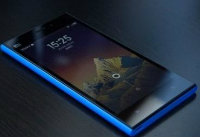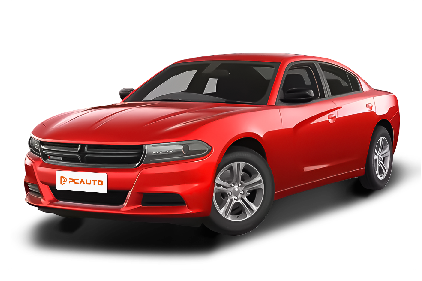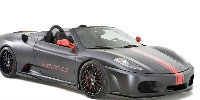Q
Are Dodge Chargers quiet?
The noise insulation performance of the Dodge Charger depends on the specific model and configuration. Generally speaking, the base version equipped with a V6 engine has a moderate noise control under normal driving conditions. The sound - proof materials inside the car can effectively filter out most of the road noise and wind noise. However, high - performance versions such as the Charger SRT or Hellcat have a more obvious exhaust sound during acceleration due to their large - displacement V8 engines and sporty tuning, which are more suitable for users who pursue driving excitement.
For Malaysian consumers, the local hot climate may affect tire noise. It is recommended to choose high - end models equipped with active noise cancellation technology or upgraded sound - proof glass to improve quietness. It's worth noting that American muscle cars like the Charger are not originally designed for ultimate quietness but rather to balance performance and comfort. If you have higher requirements for noise insulation, you can consider installing third - party sound - proof materials or choosing the luxury packages provided by the original factory.
Among vehicles in the same class, different brands have different tuning concepts for NVH (Noise, Vibration, Harshness). German cars usually pay more attention to high - speed quietness, while Japanese cars focus on sound insulation under low - speed urban driving conditions. Consumers should make a trade - off based on their own needs.
Special Disclaimer: This content is published by users and does not represent the views or position of PCauto.
Related Q&A
Q
Is the 2023 Dodge Charger GT fast?
The 2023 Dodge Charger GT performs well in terms of performance. It is equipped with a 3.6-liter V6 naturally aspirated engine, with a maximum output power of 300 horsepower and a peak torque of 264 lb-ft. Paired with an 8-speed automatic transmission, it can accelerate from 0 to 100 km/h in about 6 seconds. This is quite fast for a mid - to large - sized sedan, especially suitable for the urban roads and highway driving needs in Malaysia. Although it's not the fastest model in the Charger series (for example, the Hellcat version has stronger performance), the GT version strikes a good balance between power and fuel economy. Meanwhile, it also offers rear - wheel drive or all - wheel drive options to meet different driving preferences. If you're after stronger performance, you can consider the Charger R/T or Scat Pack versions. They are equipped with V8 engines, providing more power but also consuming more fuel. Given the hot climate in Malaysia, it is recommended to regularly maintain the engine and cooling system to ensure the vehicle stays in good condition in the long run.
Q
Are Dodge Chargers 4-door?
Yes, the Dodge Charger is a classic four - door muscle car. Since its launch in 1966, most models have adopted a four - door design. In particular, all current models (as of 2023) feature a four - door layout, which combines the performance of American muscle cars with family practicality.
For car enthusiasts in Malaysia, although the Dodge brand is relatively niche there, the Charger can still be seen through parallel imports. Its iconic HEMI V8 engine and four - door design not only provide furious acceleration but also make it suitable for family use.
It's worth noting that four - door muscle cars are relatively rare in the Southeast Asian market. These types of vehicles usually focus more on straight - line acceleration performance. Compared with the common Japanese or European four - door sedans in Malaysia, the Charger's wide - body design and rear - wheel drive layout require drivers to adapt to the local rainy - climate driving habits.
In addition, Dodge announced in 2023 that the Charger will be transformed into a pure - electric vehicle. Future versions may continue with the four - door design, but the power system will be completely overhauled. This might be an interesting option for Malaysian consumers who are concerned about environmental trends.
Q
Are Dodge Chargers RWD or FWD?
The Dodge Charger is a classic American muscle car, primarily featuring rear-wheel drive (RWD). This design offers more powerful power output and a more engaging driving experience, making it a great fit for owners who pursue performance. In Malaysia, despite the variable road conditions and climate, rear-wheel-drive cars perform exceptionally well on dry roads. Some high-performance versions are even equipped with an all-wheel-drive (AWD) system to enhance stability on slippery surfaces. The Dodge Charger has never had a front-wheel-drive (FWD) version, which aligns with its muscle car positioning.
For Malaysian consumers considering a rear-wheel-drive model, it's important to pay attention to driving skills on rainy or slippery roads. You should control the throttle properly to avoid skidding. Meanwhile, rear-wheel-drive cars usually have a better front - rear weight distribution, offering more flexibility when cornering. However, their daily maintenance and tire wear might be slightly higher than those of front-wheel-drive cars. It's recommended to choose based on your personal driving habits and needs.
Q
Does the Dodge Charger have a 360 camera?
Yes, some high - end models of the Dodge Charger are indeed equipped with a 360 - degree panoramic camera system. This function provides a panoramic view around the vehicle through a combination of multiple cameras, which is especially useful for users in Malaysia. It allows for easier judgment of surrounding obstacles in narrow streets or crowded parking lots. Currently, the 360 - degree camera is mainly found in the Scat Pack or higher - spec versions of the Charger, but the specific configuration should be based on the configuration list provided by local dealers in Malaysia.
It's worth mentioning that the 360 - degree camera technology was initially used mainly in luxury models and has now gradually become popular in performance cars and family cars. It not only assists in parking but also provides a more comprehensive view at low speeds, reducing the risk of blind spots. Malaysian consumers should also note that these high - tech configurations may need to be optionally installed or bundled with specific packages. It is recommended to visit authorized dealers to personally experience the smoothness of the operation interface and the clarity of the images. At the same time, judge the practicality based on your own driving habits, because American muscle cars like the Charger, which are relatively wide in Malaysia, are in greater need of such auxiliary systems.
Q
Does the Dodge Charger have AWD?
The Dodge Charger does offer an all-wheel drive (AWD) version, but not all models come standard with this feature. It depends on the year and configuration. For example, the Charger GT and Charger R/T models from 2014 to 2021 could be optionally equipped with an AWD system, while high-performance versions like the Charger SRT Hellcat only offer rear-wheel drive (RWD) to maintain light weight and sporty performance. For Malaysian consumers, the AWD system can provide better traction and stability when driving on slippery roads or during the rainy season. However, it should be noted that AWD models may result in higher fuel consumption and maintenance costs.
In addition, as a representative of American muscle cars, the Dodge Charger's large-displacement V6 or V8 engines and classic design are quite niche in the local market. If you're considering a parallel import, you need to confirm whether it meets Malaysia's emission and certification standards. It is also recommended to learn about after-sales support and parts supply through official channels or authorized dealers.
Q
Does a Dodge Charger have horsepower?
Yes, the Dodge Charger does have powerful horsepower. The specific figures depend on the models of different years and configurations. For example, the latest Dodge Charger SRT Hellcat is equipped with a 6.2 - liter supercharged V8 engine, which can output up to 717 horsepower. The higher - performance Charger SRT Hellcat Redeye can even reach 797 horsepower, making it one of the rare high - performance four - door sedans in the Malaysian market. For Malaysian car enthusiasts, the Dodge Charger is not only famous for its classic American muscle car styling but also highly regarded for its powerful performance and unique rear - wheel or four - wheel drive configurations. In Malaysia, although such large - displacement models may face high import taxes and fuel costs, their excellent acceleration performance and unique driving experience still attract many performance - seeking car owners.
In addition, understanding horsepower data is important when choosing a car, but factors such as torque, gearbox tuning, and chassis settings should also be comprehensively considered, as these will all affect the actual driving experience. If you're interested in American muscle cars, you can also pay attention to other similar models like the Ford Mustang or Chevrolet Camaro. They also offer different levels of horsepower configurations to meet various driving needs.
Q
Does the Dodge Charger have traction control?
Yes, the Dodge Charger is indeed equipped with a Traction Control System (TCS). This feature is particularly useful in the driving environment of Malaysia. Especially on wet roads during rainy days or when making an emergency acceleration, the system will automatically monitor wheel slippage and adjust the engine output or apply braking force to ensure the vehicle remains stable. Traction control is an important part of modern automotive safety technology. Many Malaysian consumers will pay special attention to such configurations when purchasing high - performance cars like the Charger, as it can enhance driving safety.
In addition to traction control, the Charger may also be equipped with an Electronic Stability Program (ESC) and multiple driving modes to further meet the needs of different road conditions. In Malaysia's rainy climate and mixed urban road conditions, these systems can effectively reduce the risk of slippage and loss of control. It is recommended that car owners regularly check the system status to ensure normal functionality.
If you have any questions about the specific configuration of the model, you can inquire with the local authorized dealer for the latest specifications, as there may be slight differences in technical details among Chargers of different years or versions.
Q
Do Dodge Chargers have lane assist?
Some models of the Dodge Charger are indeed equipped with the Lane Assist system. For example, in high - end versions like the Charger GT or R/T Scat Pack, an advanced driver assistance package is usually installed, which includes Lane Keep Assist and Lane Departure Warning functions. These systems use cameras to monitor lane markings. When the vehicle unintentionally drifts out of the lane, they provide steering wheel correction or vibration alerts. They are especially suitable for long - distance driving or on highways in Malaysia.
It should be noted that the lane assistance functions may vary among models of different years and configurations. It is recommended to carefully check the configuration list of the specific model or consult the local dealer before purchasing a car. For Malaysian consumers, this kind of driver assistance technology can effectively improve driving safety, especially in areas with frequent rain and fog. However, drivers still need to stay focused because the system is only an auxiliary tool and cannot completely replace manual operation.
If you're interested in this kind of technology, you can also learn about similar functions in models of other brands such as Toyota and Honda. They are usually named "Toyota Safety Sense" or "Honda Sensing". The principles are similar, but the operation details are slightly different.
Q
What is the safety rating of the Dodge Charger?
The safety ratings of the Dodge Charger vary depending on the specific year and configuration. The latest models have performed well in the tests conducted by the National Highway Traffic Safety Administration (NHTSA) and the Insurance Institute for Highway Safety (IIHS) in the United States. For example, the 2023 Charger received a five - star overall rating from the NHTSA, and the IIHS gave it a "Good" rating in many of its crash tests, especially excelling in the frontal offset crash and side - impact tests.
For Malaysian consumers, although there is no local official agency conducting similar tests, the Charger's US - spec safety features such as the multi - airbag system, electronic stability control, blind - spot monitoring, and automatic emergency braking can still provide a high level of safety for drivers.
It's worth noting that safety ratings are not the only thing to consider. The road conditions during actual driving, the vehicle's maintenance status, and driving habits are also equally important. It is recommended that Malaysian car owners consider their own needs when purchasing a car and also pay attention to the vehicle's active safety features, such as adaptive cruise control and lane - keeping assist. These technologies can further enhance driving safety, which is especially useful on Malaysia's complex urban and highway roads.
Q
Is a Dodge Charger a drag car?
The Dodge Charger is indeed a model often used in drag racing. Especially its high - performance versions like the Charger SRT Hellcat, with its powerful HEMI V8 supercharged engine (capable of outputting over 700 horsepower) and an optimized rear - wheel drive system, have become a popular choice for drag racing. However, in essence, it's a high - performance muscle car that balances daily driving and track performance. It's not a pure competition vehicle specifically designed for drag racing (such as a dragster).
In Malaysia, due to the right - hand drive market restrictions, the Charger hasn't been officially introduced. But a small number of left - hand drive vehicles imported through parallel channels may appear on private tracks or in the modification circle. Local enthusiasts need to pay attention to the legal issues. If you're interested in drag racing, locally modified Japanese cars (such as the Mitsubishi Evolution or Nissan GT - R) are more common in Malaysia because there's better support for parts and tuning.
Although the Dodge Charger has high modification potential, one needs to consider the local maintenance network and fuel compatibility. It's recommended to conduct in - depth research before investing in modifications.
Latest Q&A
Q
What is the top model of Toyota Yaris 2019?
The top trim of the 2019 Toyota Yaris is the 1.5G variant. It's powered by a 1.5-liter Dual VVT-i naturally aspirated engine that cranks out 107 horsepower, paired with a 7-speed CVT transmission for a smooth driving experience and solid fuel efficiency. This trim comes standard with LED headlights, a smart key system, automatic climate control, and a 7-inch touchscreen infotainment system that supports Apple CarPlay and Android Auto, boosting both tech appeal and convenience. On the safety front, the 1.5G is equipped with vehicle stability control, six airbags, and a reverse camera to keep you secure on the road. As the flagship of the Yaris lineup, the 1.5G steps up its game in comfort and functionality, making it a solid pick for shoppers after a high-quality subcompact. It's worth noting that the Yaris has long been known globally for its reliability and low maintenance costs, and the 2019 model gets tweaks to handling and sound insulation, further cementing its competitiveness in the segment.
Q
What are the trim levels for the 2019 Toyota Yaris?
The 2019 Toyota Yaris was available locally in three main trim levels: 1.5E, 1.5G, and 1.5V. All came equipped with a 1.5-liter Dual VVT-i naturally aspirated engine paired with a 7-speed CVT transmission. The base 1.5E came standard with LED daytime running lights, manual air conditioning, and a 2-DIN audio system. Stepping up to the 1.5G added smart keyless entry, push-button start, and 15-inch alloy wheels. The top-of-the-line 1.5V rounded things off with automatic climate control, a leather-wrapped steering wheel, and paddle shifters. It's worth noting that this Yaris featured Toyota's latest GOA body technology, and across the entire lineup, you got seven airbags, VSC vehicle stability control, and HAC hill-start assist as standard safety kit. If you're considering a used one, make sure to check the CVT transmission fluid change records and the condition of the undercarriage—this powertrain is pretty sensitive to regular maintenance. While competitors like the Honda Jazz offer more flexible interior space, the Yaris leans more towards comfort with its noise insulation and chassis tuning, making it a solid pick for daily city driving.
Q
What is the mileage of Toyota Yaris 2019?
The fuel efficiency of the 2019 Toyota Yaris varies depending on the trim and powertrain. The version with the 1.5-liter naturally aspirated engine averages around 6.5 L/100km in city driving, dropping to roughly 5.0 L/100km on the highway. The hybrid model is even thriftier, with a combined fuel consumption of about 4.0 L/100km. Actual numbers might fluctuate slightly based on driving habits and road conditions.
This car has gained popularity for being economical and practical, making it a solid pick for daily commutes and family use. Maintenance costs are relatively low, parts are readily available, and repairs are hassle-free. For shoppers who prioritize fuel economy, the Yaris is a great option—plus, its reliability and durability have been proven in the market, saving you money over the long haul. To squeeze out even better mileage, keeping your tires properly inflated and avoiding hard acceleration or sudden braking can go a long way in boosting fuel efficiency.
Q
How big is the gas tank on a 2019 Toyota Yaris?
The 2019 Toyota Yaris comes with a 42-liter fuel tank, a design that meets daily commuting and short to medium-distance travel needs, balancing fuel efficiency with practicality. Powered by a 1.5-liter naturally aspirated engine paired with a CVT transmission, this model delivers a combined fuel consumption of approximately 5.2 liters per 100 kilometers, meaning a full tank theoretically offers a range of around 800 kilometers. It's worth noting that the actual usable tank capacity might be slightly less than the rated value; this is a standard industry practice to leave safe space for fuel expansion. We recommend drivers refuel when the fuel level drops to 1/4 to prevent premature wear on the fuel pump from prolonged operation at low levels. For more precise tank specifications, check the vehicle owner's manual or use the fuel gauge reset method for actual testing. Additionally, regular maintenance of the fuel system can effectively maintain tank cleanliness and fuel supply efficiency.
Q
What oil does a 2019 Toyota Yaris take?
The 2019 Toyota Yaris recommends using fully synthetic 0W-20 motor oil that meets API SN or higher standards. This low-viscosity oil optimizes cold-start protection and improves fuel efficiency. If this specific viscosity isn't readily available, 5W-30 can be used as a substitute, though you might notice a slight increase in fuel consumption. For maintenance, it's advised to change the oil every 10,000 kilometers or 6 months, whichever comes first. In hot climates or with frequent short trips, you may want to shorten the oil change interval a bit. A key point to note: some models with the 1.5L 2NR-FE engine equipped with a start-stop system must use "Resource Conserving" labeled fuel-efficient oil to ensure proper system operation. When choosing oil, prioritize products that meet the Toyota-certified ILSAC GF-5 standard. These oils have a more balanced additive package, effectively preventing low-speed pre-ignition and protecting the emission control system. If your vehicle is still under warranty, it's best to use the original factory oil to avoid warranty disputes. Also, regularly check the oil dipstick to ensure the level is within the normal range—excessive oil consumption could be an early sign of aging piston rings or valve seals.
View More


















Pros
Cons